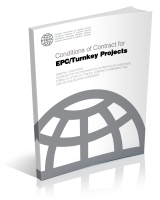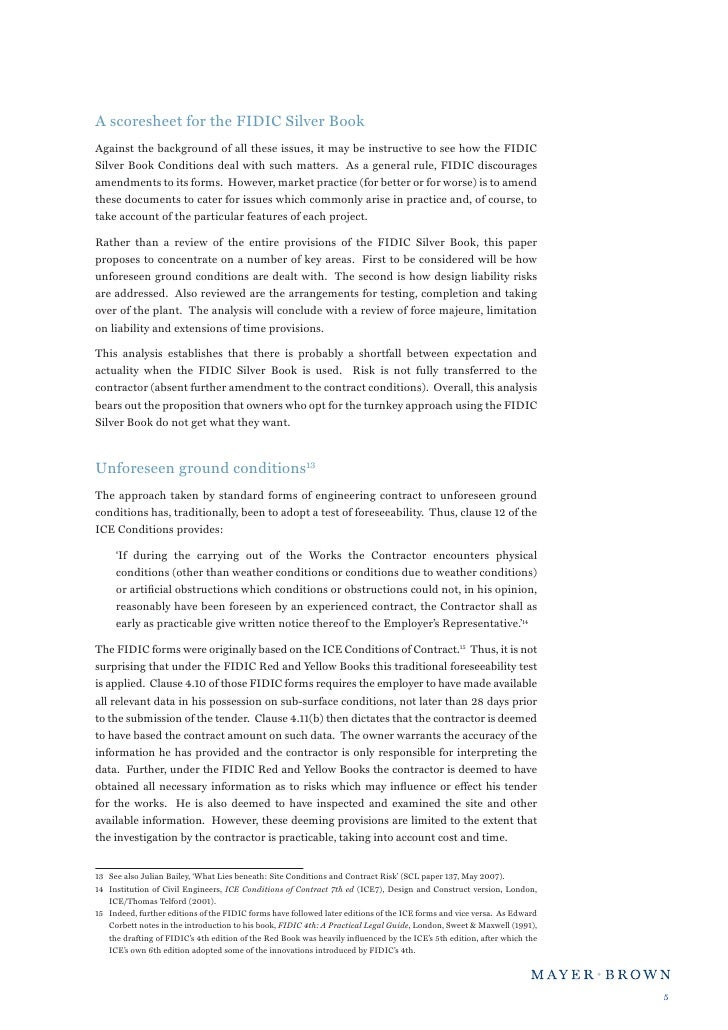- Fidic Silver Book Free Download
- Fidic Silver Pdf
- Fidic Silver Book 2019 Pdf Free Download
- Fidic Silver Book 1999 Pdf Free Download
Download FIDIC Books
Tag: FIDIC Download Contract, FIDIC Conditions of Contract, Conditions of Contract, what is fidic, contract template, employment contract, fidic contract, contract fidic, fidic book, fidic contracts, fidic agreement, download fidic, fidic download, fidic conditions, fidic books, fidic red, fidic conditions of contract, fidic contract conditions, fidic condition of contract, fidic yellow, yellow fidic, fidic pdf, fidic 1999, fidic free download, free fidic download, fidic download free, fidic silver, fidic guide, fidic silver book, silver book fidic, fidic form, fidic construction contract
Fidic Book Conditions of Contract
This Second Edition of the FIDIC Silver Book maintains the principles of risk sharing established in the 1999 edition, while seeking to build on the substantial experience gained from its use over the past 18 years. For example, this edition provides: 1) greater detail and clarity on the requirements for notices and other communications. The FIDIC Silver Book – Impact for Project Financed EPC contracts – a detailed analysis Published: 14/05/18. In recent years the FIDIC Silver Book has become the de facto starting position for EPC contracts in project financed transactions in Sub-Saharan Africa and other emerging markets. For the purposes of this article, our. And Yellow books together with a Green Book as the short form of contract and a Silver Book for turnkey contracts. More recently in 2005 FIDIC published an amended version of the Red Book for use by Multilateral Development Banks and in 2007 published a seminar edition of the Gold Book for Design, Build and Operate contracts. This note highlights the key issues and commonly amended provisions of FIDIC's Silver Book (1999). Free Practical Law trial To access this resource, sign up for a free trial of Practical Law.
FIDIC “New Red Book”:FIDIC Red Book Construction Contract Fidic Book
FIDIC “New Yellow Book” FIDIC Yellow Book Plant and Design Build Contract Fidic Book
FIDIC Contract “New Silver Book”FIDIC Silver Book EPC Turnkey Contract Fidic Book

FIDIC “New Green Book” – the “Mini Red Book”: FIDIC Green Book Short Form of ContractFidic Book
FIDIC “Pink Book” FIDIC construction contract mdb harmonised Fidic Book
Basic Principles and Selection of FIDIC Documents – New Red Book, FIDIC Red Book Construction Contract
Basic Principles and Selection of FIDIC Documents – New Yellow Book, FIDIC Yellow Book Plant and Design Build Contract Fidic Book
FIDIC Orange Book Conditions of Contract for Design Build and Turnkey Fidic Book
The FIDIC suite of construction contracts is written and published by the International Federation of Consulting Engineers. In 1999, FIDIC has published the First Edition of FIDIC Rainbow Suite that consists of three leading and most known books; the Red Book, the Yellow Book and the Silver Book. There are other FIDIC Construction Contracts, as well. However, they are mostly related to a particular type of project or sector. Therefore, in this article, we will be focusing on three principal contracts of FIDIC which are the Red Book, the Yellow Book and the Silver Book.
Before answering the question of which FIDIC Book should be used for which project, it is better to understand the basic differences of construction contracts. In a more conventional type of a construction contract, the Employer provides a very detailed design together with the implementation design. In this type of a construction contract, the Contractor's obligation is limited with completing the contractual work in compliance with the contract and its annexes provided by the Employer. As an additional information, it is possible to say that the contracts subject to Public Procurement Law, the scope of the project is based on this conventional method. The Contracting Entity (or Employer) provides the whole design of the project together with the tender documents before the tender[1]. In the second type of construction contracts, the Employer completes the pre-design stage of the project, however, the Contractor is obliged to complete the rest of the design and finish the works in accordance with the contract provisions. This second model is called as “Design-Construction” model. Lastly, according to the third model of a construction contract, which is also named as EPC (Engineering, Procurement, Construction) model, the Employer only provides the list of requirements and as of the beginning from the pre-design stage, the project is transferred to the Contractor. At this system, the management of all of the design and construction stages belongs to the Contractor. At the end of this period, the Contractor is obliged to deliver the plant/works in a working condition to the Employer.
In the light of the information stated above; it is possible to say that the Red Book is based on conventional system, the Yellow Book is based on “Design-Construction” system and the Silver Book is based on EPC (Engineering, Procurement, Construction) system. Those books are the most commonly used FIDIC Books among others. Therefore, we will be focusing more on these books in this article. The Red Book is based on unit price method, while the Yellow Book and the Silver Book are based on lump sum price method. Let’s have a more detailed look on each of these books and examine their advantages or disadvantages in comparison to each other considering the type of the project.
1- Red Book
Conditions of Contract for Construction
For Building and Engineering works designed by the Employer
In FIDIC Books, the system is placed on three columns. First of these columns is the Employer, the second one is the Contractor and the third one is the Engineer who will control the process of the construction and observe the technical and professional standards of the construction. The Engineer is the real or legal person who acts as the representative of the Employer until the completion of the project and who has a consultancy agreement with the Employer.[2] In the Red Book, the Engineer has great responsibilities on determining the prices because the Red Book is based on unit price method.

In the Red Book, the risks are more balanced between the Contractor and the Employer in comparison to the Silver Book. For instance, according to the Red Book, the Contractor may claim for time extension and compensation in case of unexpected site events. Additionally, the Employer is taking the responsibility of the site data that is provided to the Contractor which effects the risk balance of the contract in a great way. Due to the conventional nature of the Red Book where the design is prepared by the Employer, the risk of the subsurface and ground belongs to the Employer, as well. Therefore, the site conditions are accepted as the Employer’s risks according to the Red Book. In such contracts, the Contractor is entitled to claim for time extension and compensation. Similarly, the unfavourable weather conditions are also accepted as the Employer’s risks according to the Red Book.
In the updated version of the Red Book, the same conventional method is applicable where the Employer (or by the Engineer on behalf of the Employer) is responsible of the design of the project. Additionally, if some design parts are required to be made by the Contractor, that should be clearly defined in the Contract. Even in such case the Employer’s responsibility for the design is not affected.

As we see, Red Book is more convenient for the less complex and mostly construction related projects such as water and sewage systems, pipelines, road, bridge, structure building. It is not recommended for projects which requires know-how and research & development with more electro-mechanical works.[3]
2- Yellow Book
Conditions of Contract for Plant and Design-Build
For electrical and mechanical plant, and for building works, designed by the Contractor
Yellow Book is mostly used for the construction works where the design, construction and assembly is made by the Contractor. According to the Yellow Book, the design of the works shall be carried out by the Contractor instead of the Engineer. In that sense, for the high-volume projects including the electro-mechanical and constructional works together, the areas of expertise is divided between the Engineer and the Contractor. As the design is carried out by the Contractor, the responsibility for the design belongs to the Contractor, as well.
Similar to the Red Book, the management and inspection is carried out by the Engineer. The risk of unexpected site conditions, unfavourable weather conditions are borne by the Employer and the Contractor may claim for time extension and compensation in such case, as in the Red Book.
Considering the information stated above, the construction and assembly works including electro-mechanical content are the common areas of the Yellow Book. Additionally, when the design details are not important to the Employer, the Employer is mostly interested in seeing the working condition of the works and it prefers to provide its opinions and decisions in relation to the design, the Yellow Book should be preferred. Therefore, pumping stations, water and waste treatment plants, industrial plants, transfer, separation, recycling units are typical project types where the Yellow Book is used.[4]
3- Silver Book
Conditions of Contract for EPC/Turnkey Projects
The Silver Book is designed for turnkey infrastructure projects such as power plants, factory and sewage plants. In the Silver Book, there is the Representative of the Employer instead of the Engineer. In other words, there is a direct relationship between the Employer and the Contractor. In this relationship, the Contractor accepts all of the risks and difficulties of the project. The Employer only provides a list of requirements without having any liability arisen from it.
In the Silver Book, the risk is on the Contractor in an unbalanced way in comparison to the Red Book and the Yellow Book. For instance, all of the site risks are borne by the Contractor. The Silver Book states that the Employer has no liability in relation to the subsurface risks that is provided to the Contractor. Despite to the Red Book and the Yellow Book, all of the subsurface risks are borne by the Contractor. Also, the risks of unexpected site conditions, unfavourable weather conditions are borne by the Contractor, as well.[5]
In that sense, if there is high possibility of experiencing unexpected events during the project period despite to the inspections to be carried out geologically or in relation to the subsurface, the use of the Silver Book is not recommended. The reason is that the Contractor will not be entitled to claim for any damages occurred due to the subsurface or ground condition of the site. Therefore, if there is no enough inspection before the signing of the Contract or there is short amount of time for such inspection, the Silver Book is not recommended. Also, if the Employer would like to intervene with the works of the Contractor daily, the Silver Book is not suitable. In such cases, the Yellow Book is recommended.[6]
On the other hand, the Silver Book is designed according to the needs of the construction sector. The Silver Book is recommended in cases where the Employer is mostly interested in the end results rather than the process and/or the design of the works.
Best Regards,
Zeynep Kabiloğlu Poyraz
Attorney at Law, LL.M.
Fidic Silver Book Free Download
Fidic Silver Pdf

[1] Sözen, Zeynep Prof. Dr.: FIDIC Genel Koşullarından Örneklerle İnşaat Sözleşmelerinin Yönetimi, Legal Yayıncılık, s.7
[2] Kaplan, İbrahim Prof. Dr.:İnşaat Sözleşmeleri Hukuku ve Endüstri Yatırım Sözleşmeleri, 2. Bası, Yetkin Yayınları, Ankara, 2019, s.414
[3]Töre, Nazlı Dr.:FIDIC Kurallarının Karşılaştırmalı Hukukta Yeri, Dayınlarlı Hukuk Yayınları, Ankara, 2011, s.13
[4]Töre: age, s.14
[5]Sözen, age, s.147
Fidic Silver Book 2019 Pdf Free Download
[6]Töre: age, s.17